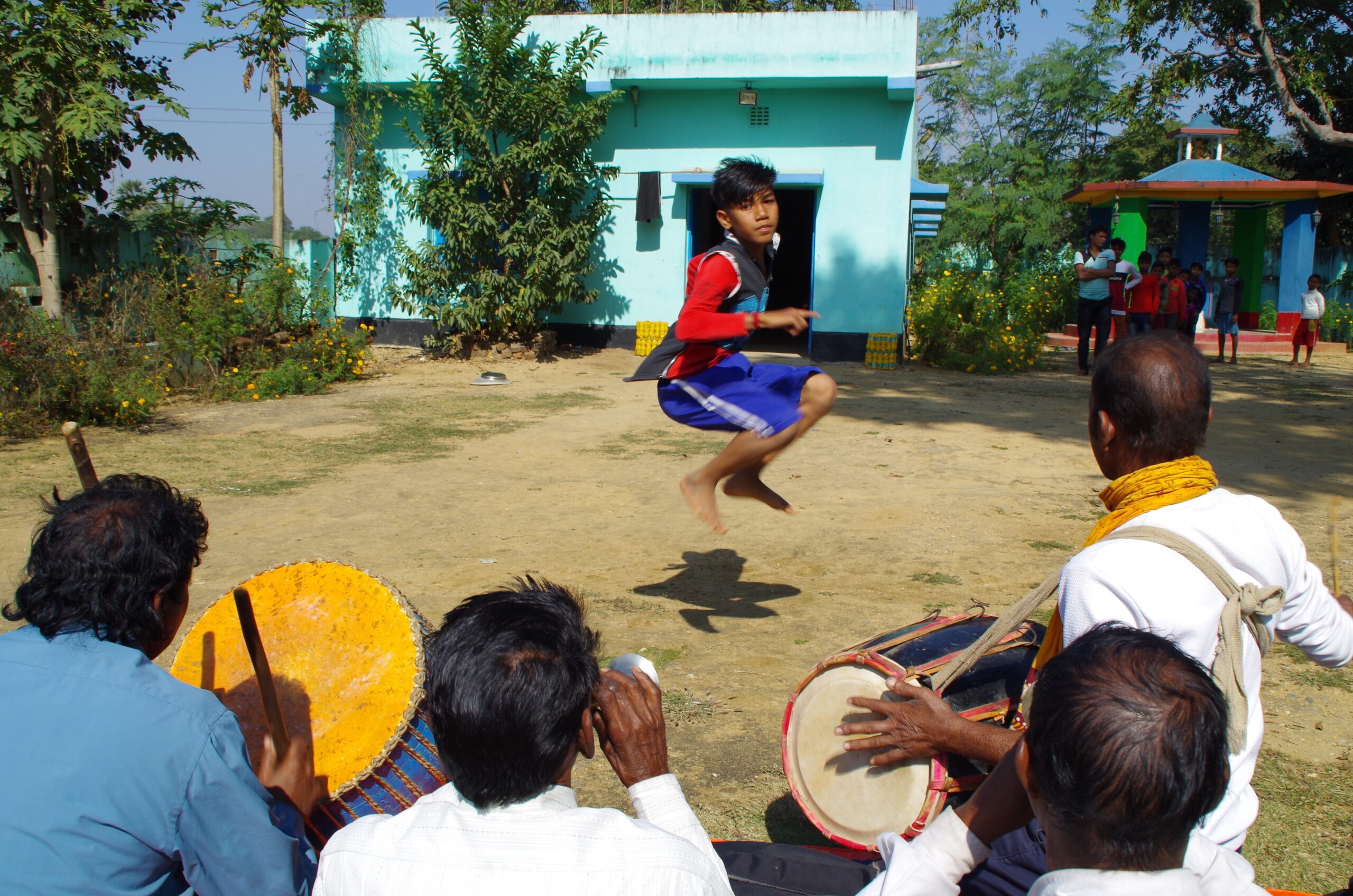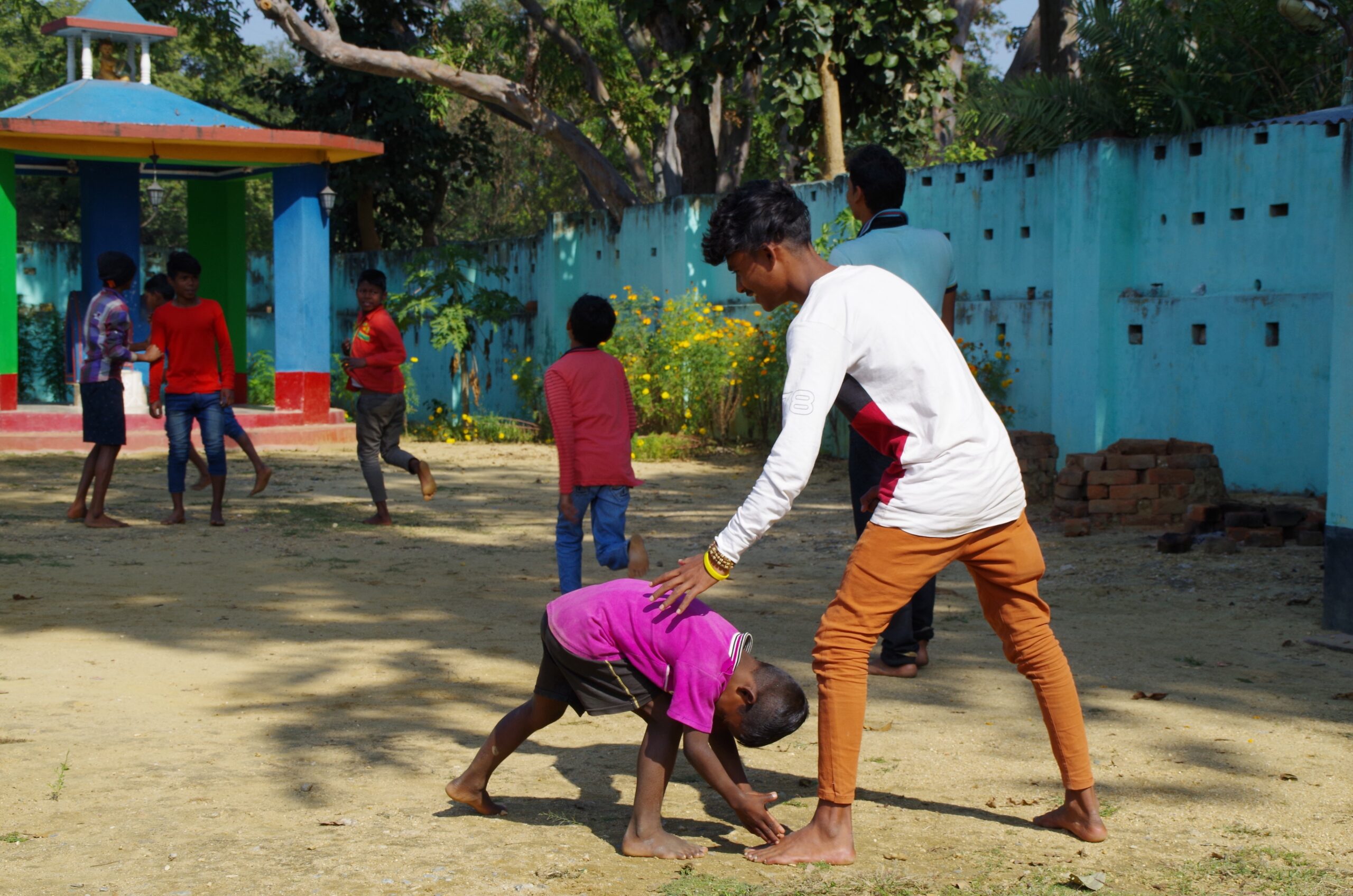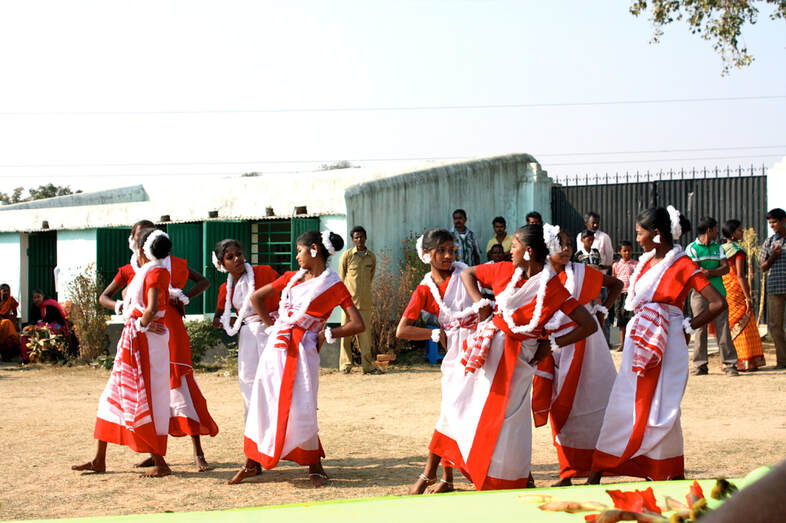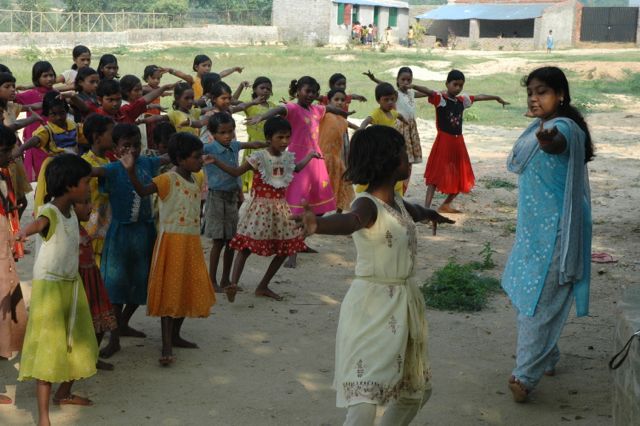Traditional Dance – Purulian Chhou Nach
Dance is an important part of cultural identity. Dance is a tool for seeking, and finding, an understanding of the human condition. It provides a metaphor for life: our relationships, our beliefs, and the abstract concepts that weave into these. Classes in traditional dance for boys and girls are held at the community centre, with the boys learning the spectacular masked Chhou dance and the girls learning a more modern form.
The Chhou dance is a cultural form of dance performed by male dancers from families of traditional artists or from local communities. The boys or young men dance to a boisterous and rowdy form of traditional folk music, played on reed pipes and drums. Masks form an integral part of Chhou Dance in Purulia, where the craft of mask-making is undertaken by communities of traditional painters. Purulia is the last remaining area where the masks have been retained.




The themes for these dances include local legends, folklore and episodes from the Ramayana and Mahabharata, and the knowledge of dance, music and mask-making is transmitted orally. Tribal groups have handed on the skills of dancing, performing music and making masks over generations in villagers dedicated to maintaining these skills.
In 2010, the Chhou dance was inscribed in the UNESCO’s Representative List of the Intangible Cultural Heritage of Humanity. Tinku has fostered this form of dance over the past thirty years by organising international tours with Chhou dancers and musicians, and by holding weekly training sessions in the community centre with the expert mentors being some of those who toured internationally in the past. Tinku is no longer here to oversee this, but it must be preserved as a vital aspect of this ancient culture.
Traditional girls’ dance


